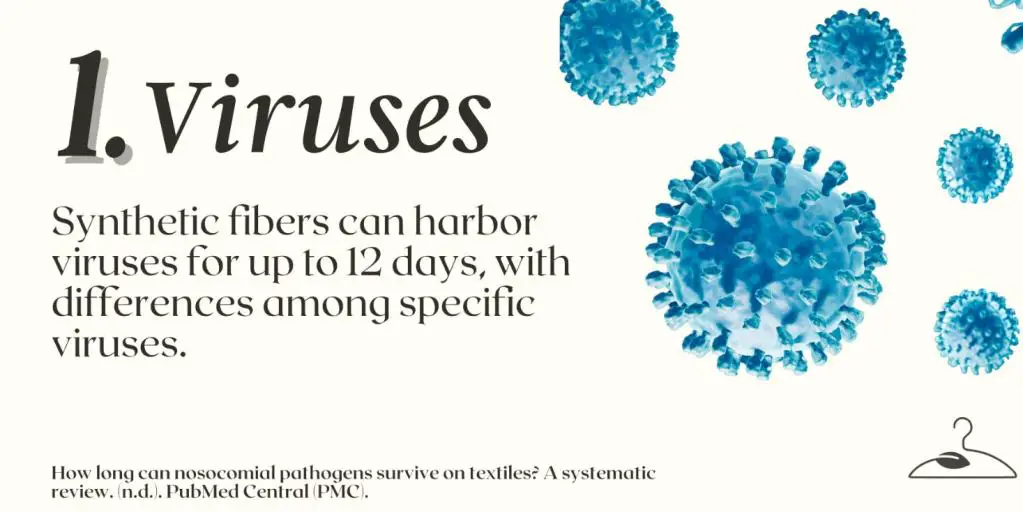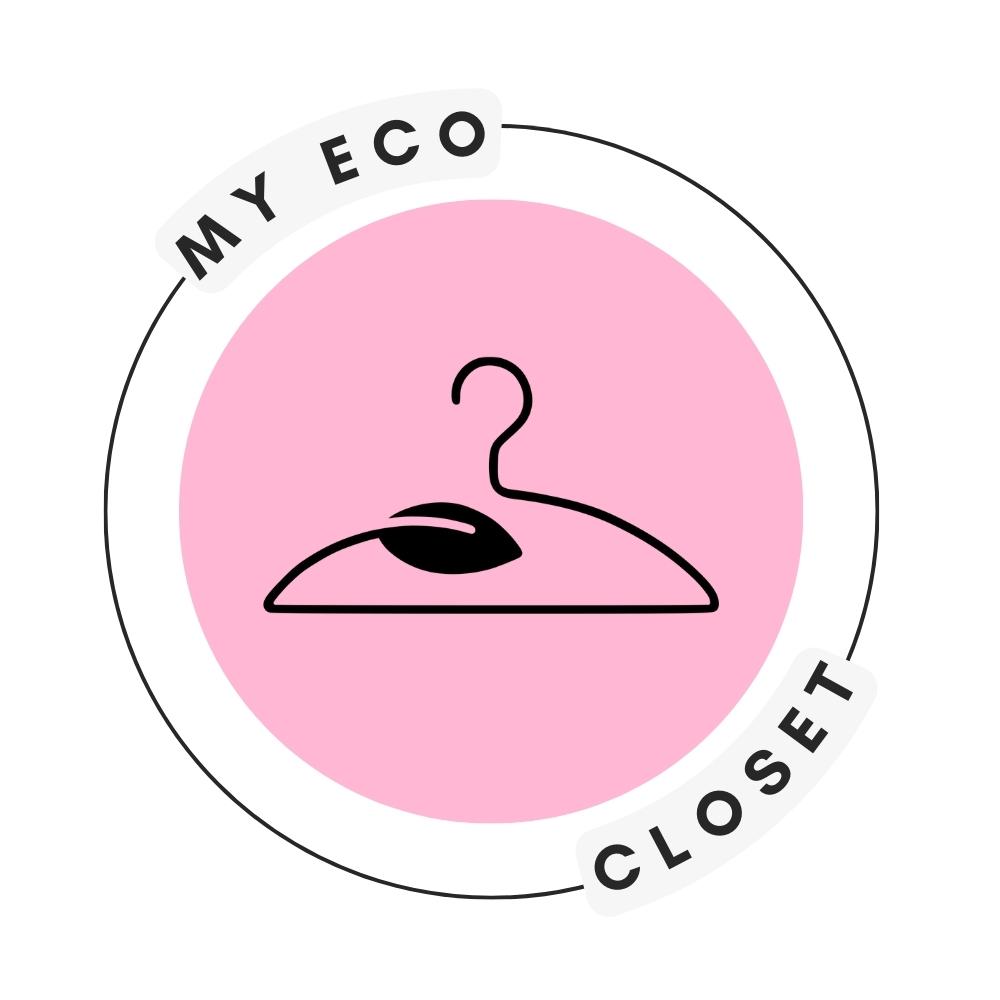Whether you’re acquiring hand-me-downs or preloved clothes, it’s natural to worry about potential health risks of wearing used clothes. Buying secondhand is an amazing way to be sustainable, but their risks shouldn’t be neglected. In this guide, we will explain the health issues that may arise from wearing used clothes and how to mitigate them.

1. Viruses from Used Clothes: Dangerous or Not?
Viruses survive on textiles for varying duration. Research shows that human coronaviruses can linger in used fabrics for up to 3 days, being able to transfer from “polyester textile to other surfaces after 72 hours of incubation.” COVID-19, specifically, can infect someone when spread via polyester for at least 3 days.
However, textiles’ ability to infect someone is usually gone within 2-4 weeks at regular room temperature (Kramer & Kampf, 2020). This is much faster than how long viruses can live on hard, non-porous surfaces like stainless steel or plastic.
So, if you’re concerned about contracting viruses through secondhand clothes, fear not. By the time they have gone through the collection, processing, and resale, any viruses that may originally been present are unlikely to still be infectious. This makes secondhand apparel relatively low-risk for viral transmission.

2. Used Clothes Harbor Bacteria
Unlike viruses, pathogenic bacteria, such as Salmonella, MRSA, and mold, can thrive on fabrics for extremely long periods of time. Research has shown certain bacteria species surviving over 200 days on polyester, 90 days on cotton, and mixed fiber clothing for up to 90 days (Kramer & Kampf, 2020). Humid environments allowed the bacteria to live even longer on these textiles.
As compared to viruses, bacteria have a much higher persistence. Since used clothing gets exposed to all kinds of situations before re-sale, there are more opportunities for bacterial contamination to occur and remain viable for a long time. This makes used clothes riskier from a bacteria standpoint compared to their viral safety.

3. Fungal Infections Live on Clothes, Unless Washed With Hot Water
Fungal infections are a significant risk when clothes are not washed with hot water. Fungi, such as those causing ringworm, athlete’s foot, and jock itch, can persist on used garments, even when they’re washed (Reynolds et al., 2022). These microorganisms are resilient and can survive in textile fibers, especially synthetic ones.
Synthetic fabrics fail to absorb moisture, so all the residues, such as soiling and stains, that stay on the fabrics end up fostering mildew. For this reason, we recommend avoiding wearing used clothes made of synthetic fibres, such as nylon, polyester, polypropylene, acrylic, and rayon, as they foster micro-environments that let fungal infections thrive.
A common question that arises is whether washing can eliminate fungi from these fabrics. Research shows that low-temperature washing fails to eradicate fungal pathogens. Unless the clothes are washed at a temperature of roughly 60°C (140°F) with regular detergent, fungal growths are likely to persist.
However, if the synthetic fabric in question can withstand a hot water cycle, it will be safe to wear after washing at the appropriate temperature.

4. STDs: Why You Shouldn’t Wear Used Underwear and Swimwear
Even after washing with soaps, bacteria and fungi linger on secondhand swimsuits, bras, briefs, and panties. Research detected the presence of Methicillin-resistant Staphylococcus aureus (MRSA) and Methicillin-sensitive Staphylococcus aureus (MSSA), as well as Candida tropicalis, Candida glabrata, and Trichophyton mentagrophytes, in unwashed secondhand undergarments.
For this reason, we’d recommend steering from used swimwear, unless properly disinfected, as they are inherent risks associated with wearing them. When it comes to sexually transmitted diseases (STDs), however, the overall risk of contracting them through secondhand underwear is low.
The transmission is limited to specific infections, such as pubic lice (crabs), scabies, and molluscum contagiosum. These infections can spread through physical contact with an infected person’s clothing – not necessarily through sexual contact alone.
However, most STDs, such as chlamydia, gonorrhea, and HIV, aren’t typically transmitted via clothing or shared surfaces. The pathogens causing these diseases can’t survive outside the body for long periods. Nevertheless, caution is wise with used undergarments, as the risk of acquiring major STDs this way is minimal, yet present.

5. Dermatitis: A Potential Health Risk of Wearing Used Clothes
If you are extremely sensitive to synthetic fabrics, dyes, and resins, you may get dermatitis from used clothes, especially if the clothes were repeatedly dry cleaned or treated with synthetic detergents.
Also referred to as clothing dermatitis, textile dermatitis occurs when your body reacts negatively to all the chemicals and compounds used in clothing production. Its symptoms encompass dryness, redness, and scaliness of the skin, often accompanied with intense itching. This form of skin allergy affects mostly women, as they tend to wear more fitting, tight, and varicolored clothing.
Given that, if the garment carries certain residues from the previous owner, such as chemicals, detergents, or even fragrance buildup, you may get adverse skin reactions, including textile dermatitis. For this reason, consider steering away from synthetic used clothes, only purchasing those made of natural fabrics (which are more likely to be organic and non-toxic).
If you do buy used clothes, disinfect them using non-toxic, natural methods before wearing them. Taking this precautionary step can help minimize your chances of experiencing any unwanted skin irritations or reactions.

Avoid Skipping This Step: Laundry Stripping
Before you wear used or secondhand clothes, make sure to opt for laundry stripping – a deep cleaning method used for washing toxins from clothes. This method removes not only organic residues from the regular wear-and-tear of garments but also toxic build-up from garment finishes, synthetic detergents, fragrances, and more.
Laundry stripping is suitable for clothes made of cotton, linen, and certain synthetics that can be washed on a hot cycle.
For an easy laundry stripping recipe, mix 1 cup of non-toxic laundry detergent, 1 cup of hydrogen peroxide, and 1/4 cup of washing soda.
When using a bathtub or sink, simply mix these ingredients with hot water directly in the vessel. Alternatively, you can prepare this blend as a washing solution for your washing machine.
- If opting for the bathtub or sink method, fill the chosen container with hot water and thoroughly dissolve the ingredient mixture into it. Submerge the contaminated clothing items and allow them to soak for 4-5 hours, giving them an occasional stir to ensure even exposure.
- For the washing machine approach, add the prepared laundry stripping solution to the detergent dispenser or drum, then load your contaminated garments and run a normal wash cycle, ensuring the water temperature is set to hot.
Why Is Laundry Stripping Effective?
Laundry stripping effectively disinfects secondhand or used clothes, thanks to the powerful disinfecting properties of its key ingredient – hydrogen peroxide. This common household chemical, when used in a typical 3% concentration, represents an excellent at-home disinfectant, capable of killing a wide range of germs, including bacteria, viruses, fungi, and spores.
In fact, the CDC recommends using 3% hydrogen peroxide to inactivate pathogens like rhinovirus, making it ideal for disinfecting previously worn clothes harboring microorganisms.
However, this is not all. While less powerful than hydrogen peroxide, baking soda also fuels the antibacterial action by inhibiting certain bacteria, such as Streptococcus mutans. By this, it helps sanitize used clothing during the laundry stripping process, ultimately, minimizing the health risks of wearing used clothes while ensuring their safety and hygiene for future wear.
Frequently Asked Questions
Can You Contract Diseases Through Used Clothes?
Yes, you can contract diseases through used clothes. Secondhand garments may carry viruses, bacteria, fungi, and even some STDs from previous wearers. However, proper washing and disinfection can help mitigate this risk.
Are secondhand clothes safe to wear?
Absolutely. While there are potential health risks associated with wearing used clothes, such as exposure to viruses, bacteria, fungi, and residues from previous owners, proper washing and disinfection methods can mitigate these risks effectively.
How long do viruses survive on secondhand clothes?
Research suggests that human coronaviruses, including COVID-19, can linger on used fabrics for up to 3 days. However, their ability to infect someone typically diminishes within 2-4 weeks at room temperature. Therefore, the risk of viral transmission through secondhand clothes is relatively low.

